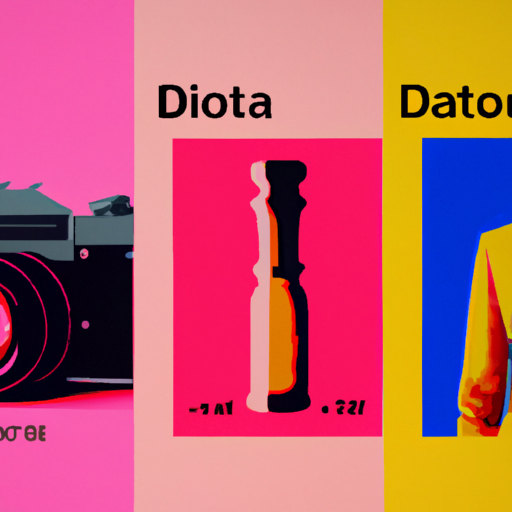
-
Table of Contents
- Exploring the Concept of Data-driven Infographics
- What are Data-driven Infographics?
- The Benefits of Data-driven Infographics
- Examples of Data-driven Infographics
- Example 1: The Impact of Climate Change
- Example 2: The Effects of Social Media on Mental Health
- Example 3: The Benefits of Exercise
- Case Studies: Successful Data-driven Infographics
- Case Study 1: Gapminder
- Case Study 2: The New York Times
- Case Study 3: Information is Beautiful
- Conclusion
Exploring the Concept of Data-driven Infographics

Infographics have become an increasingly popular way to present complex information in a visually appealing and easily digestible format. They combine data, design, and storytelling to convey information in a way that is both engaging and informative. In recent years, the rise of data-driven infographics has revolutionized the field, allowing for the creation of visually stunning and data-rich graphics that provide valuable insights to the viewer. In this article, we will explore the concept of data-driven infographics, their benefits, and how they can be effectively used to communicate information.
What are Data-driven Infographics?
Data-driven infographics are visual representations of data that are created using a combination of design principles and data analysis. They are often used to present complex information in a simplified and visually appealing manner. Unlike traditional infographics, which may rely on illustrations or icons to convey information, data-driven infographics use actual data points to support their claims and provide evidence for their conclusions.
These infographics are created by collecting and analyzing data from various sources, such as surveys, research studies, or government databases. The data is then visualized using charts, graphs, maps, or other visual elements to help the viewer understand the information more easily. By presenting data in a visual format, data-driven infographics can make complex information more accessible and engaging.
The Benefits of Data-driven Infographics
Data-driven infographics offer several benefits over traditional infographics or other forms of data presentation. Here are some of the key advantages:
- Clarity: Data-driven infographics provide a clear and concise way to present complex information. By using visual elements such as charts and graphs, they can help the viewer understand the data more easily and quickly.
- Engagement: The combination of data and design in data-driven infographics makes them highly engaging. They can capture the viewer’s attention and keep them interested in the information being presented.
- Memorability: Research has shown that people are more likely to remember information presented in a visual format. Data-driven infographics leverage this advantage by presenting data in a visually appealing and memorable way.
- Storytelling: Data-driven infographics can tell a story with data. By carefully selecting and arranging the data points, infographics can guide the viewer through a narrative and help them understand the key insights or conclusions.
- Accessibility: Data-driven infographics can make complex information more accessible to a wider audience. By presenting data visually, they can help people who may not have a strong background in data analysis or statistics understand the information being presented.
Examples of Data-driven Infographics
To better understand the concept of data-driven infographics, let’s explore some real-world examples:
Example 1: The Impact of Climate Change
A data-driven infographic on the impact of climate change could include data on rising global temperatures, melting ice caps, and extreme weather events. The infographic could use line graphs to show the increase in global temperatures over time, maps to illustrate the shrinking ice caps, and bar charts to compare the frequency of extreme weather events before and after climate change.
Example 2: The Effects of Social Media on Mental Health
An infographic on the effects of social media on mental health could include data on the correlation between social media usage and feelings of loneliness or depression. The infographic could use pie charts to show the percentage of people who report feeling lonely after spending a certain amount of time on social media, and line graphs to illustrate the increase in depression rates among heavy social media users.
Example 3: The Benefits of Exercise
An infographic on the benefits of exercise could include data on the positive effects of physical activity on mental health, cardiovascular health, and overall well-being. The infographic could use bar charts to compare the rates of depression among people who exercise regularly and those who do not, line graphs to show the decrease in cardiovascular disease risk with increasing levels of physical activity, and icons to represent the various benefits of exercise.
Case Studies: Successful Data-driven Infographics
Several organizations and individuals have successfully used data-driven infographics to communicate complex information effectively. Let’s take a look at some notable case studies:
Case Study 1: Gapminder
Gapminder, a non-profit organization founded by Hans Rosling, is known for its data-driven infographics on global development. One of their most famous infographics, “The Joy of Stats,” presents data on global health and wealth over time. The infographic uses animated bubble charts to show the relationship between income and life expectancy in different countries, highlighting the progress made in global development.
Case Study 2: The New York Times
The New York Times has consistently produced high-quality data-driven infographics on a wide range of topics. One notable example is their infographic on the 2016 U.S. presidential election. The infographic used maps, charts, and graphs to present data on voting patterns, demographics, and election results, providing readers with a comprehensive understanding of the election outcome.
Case Study 3: Information is Beautiful
Information is Beautiful, a website founded by David McCandless, showcases a wide range of data-driven infographics on various topics. One of their most popular infographics, “Snake Oil Supplements,” presents data on the effectiveness of different dietary supplements. The infographic uses bar charts and icons to show the scientific evidence for each supplement, helping viewers make informed decisions about their health.
Conclusion
Data-driven infographics have revolutionized the way information is presented and understood. By combining data analysis with design principles, these infographics provide a visually appealing and informative way to communicate complex information. The benefits of data-driven infographics include clarity, engagement, memorability, storytelling, and accessibility. Real-world examples and case studies have demonstrated the effectiveness of data-driven infographics in various contexts. As data continues to play a crucial role in decision-making and communication, data-driven infographics will continue to be a powerful tool for conveying information in a compelling and meaningful way.
